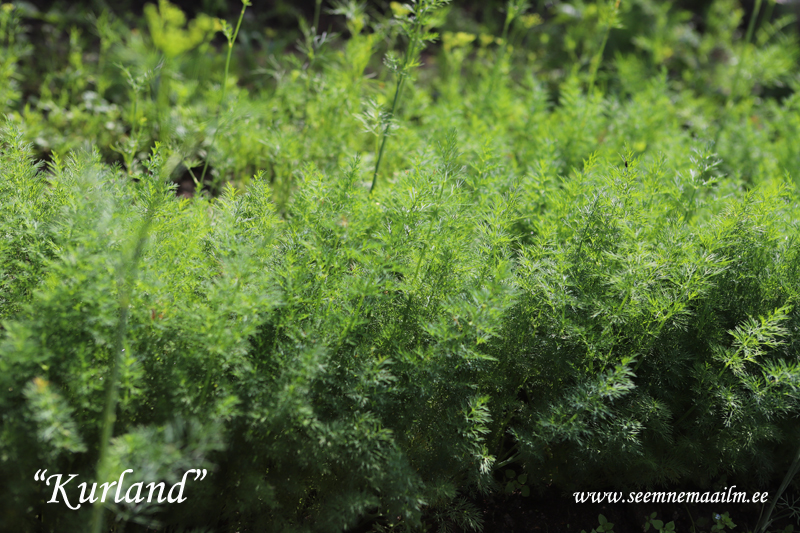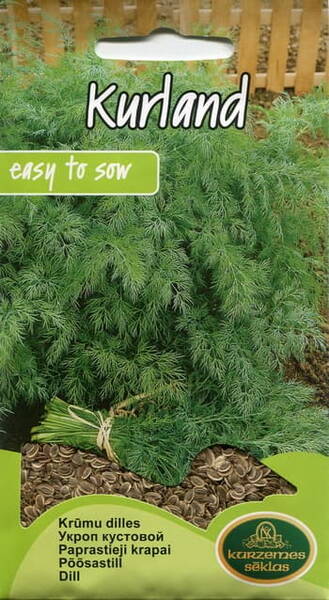Ex Tax: 1.00€
Highly aromatic and bountiful!
Mid-season variety of low bush dill. The rosette of leaves is raised. The plant has vigorous growth.
The leaf is large, strongly dissected, and green. Very responsive to regular watering.
1 g = 600-800 seeds.
Agricultural technology.
Dill is a cold-resistant, photophilous plant. Prefers fertile moist soils.
Sowing: from mid-March to July, dill seeds are sown on prepared soil without incorporation, but with obligatory 2-3 cm peat mulching. Seedlings appear on the 10-15th day.
To obtain earlier greenery, dill is sown before winter on frozen soil and covered with 2-3 cm of peat.
Care: consists of loosening row spacings, weeding, watering and top dressing. For top dressing throughout the growing season, we recommend a complex water-soluble mineral fertilizer.
Harvest: May-September. With repeated sowing and harvesting, the yield can reach up to 10 kg of green mass per 1 m2, and for spices - up to 7 kg per 1 m2.

Bushy dill.
* Dill is a favorite addition to all dishes.
An annual herbaceous plant of the umbelliferous family, 50-120 cm high. Light-loving and cold-resistant.
The best soils for dill are sandy loam, light loamy, well-cultivated and neutral.
Dill can be sown from early spring to late autumn. To obtain a conveyor, sowing is carried out every 15-20 days.
The seeding rate is 3-4 g / m2. The depth of planting is 1-2 cm. The width between rows is 15-25 cm. When growing for greens, thinning is not necessary.
When growing for pickling, 5 cm is left between plants. Care consists of loosening, weeding and watering. Harvesting for greens begins 30-40 days after sowing.
Dill has been known since ancient times. It is grown as a spice and a medicinal plant. In Ancient Greece, dill was used to decorate flower bouquets. Bunches of dill were given to valiant warriors...
Today, dill leaves and stems are a favorite and irreplaceable addition to almost all dishes. At the beginning of seed ripening, dill is used for pickling and marinating vegetables, when fermenting cabbage.
Since dill has a very strong refreshing aroma, it is usually not combined with other spices. All above-ground parts of dill contain essential oil, a significant amount of carotene, vitamins B1, B2, C, PP, P, as well as mineral salts of calcium, phosphorus, potassium and iron.
In folk medicine, dill is used as a diuretic for pyelonephritis and nephrolithiasis, used as a diaphoretic and expectorant for colds.
Powder from seeds and a decoction of the herb are indicated for gastritis with low acidity, diseases of the liver and biliary tract.
Fresh dill greens have a good effect on digestive disorders. Dill seeds are used for insomnia and to increase milk secretion in nursing women.












